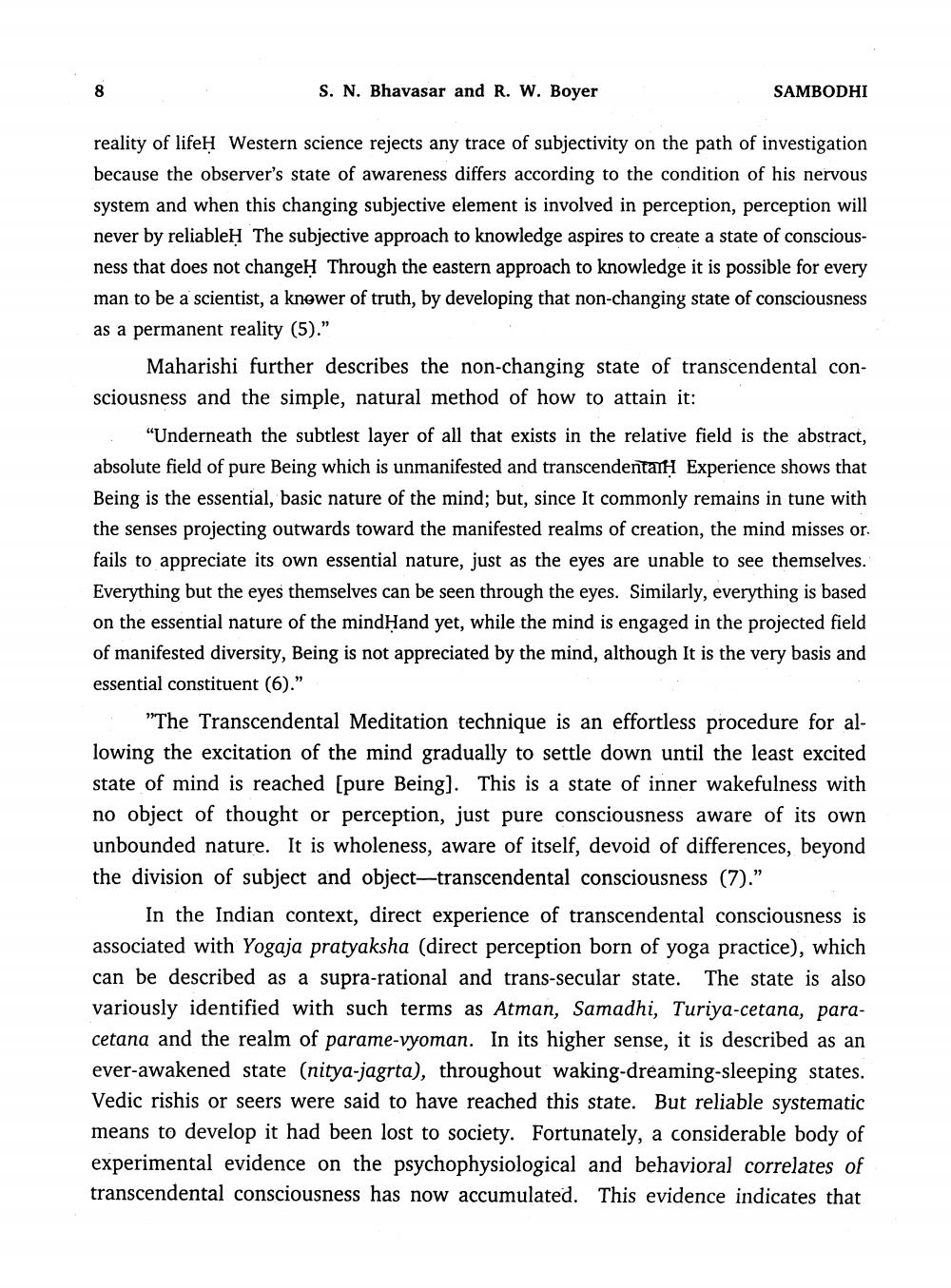________________
S. N. Bhavasar and R. W. Boyer
SAMBODHI
reality of lifeh Western science rejects any trace of subjectivity on the path of investigation because the observer's state of awareness differs according to the condition of his nervous system and when this changing subjective element is involved in perception, perception will never by reliableị The subjective approach to knowledge aspires to create a state of consciousness that does not changeị Through the eastern approach to knowledge it is possible for every man to be a scientist, a knower of truth, by developing that non-changing state of consciousness as a permanent reality (5)."
Maharishi further describes the non-changing state of transcendental consciousness and the simple, natural method of how to attain it:
i “Underneath the subtlest layer of all that exists in the relative field is the abstract, absolute field of pure Being which is unmanifested and transcendental Experience shows that Being is the essential, basic nature of the mind; but, since It commonly remains in tune with the senses projecting outwards toward the manifested realms of creation, the mind misses or. fails to appreciate its own essential nature, just as the eyes are unable to see themselves. Everything but the eyes themselves can be seen through the eyes. Similarly, everything is based on the essential nature of the mindHand yet, while the mind is engaged in the projected field of manifested diversity, Being is not appreciated by the mind, although It is the very basis and essential constituent (6)."
"The Transcendental Meditation technique is an effortless procedure for allowing the excitation of the mind gradually to settle down until the least excited state of mind is reached (pure Being). This is a state of inner wakefulness with no object of thought or perception, just pure consciousness aware of its own unbounded nature. It is wholeness, aware of itself, devoid of differences, beyond the division of subject and object-transcendental consciousness (7)."
In the Indian context, direct experience of transcendental consciousness is associated with Yogaja pratyaksha (direct perception born of yoga practice), which can be described as a supra-rational and trans-secular state. The state is also variously identified with such terms as Atman, Samadhi, Turiya-cetana, paracetana and the realm of parame-vyoman. In its higher sense, it is described as an
awakened state (nitya-jagrta), throughout waking-dreaming-sleeping states. Vedic rishis or seers were said to have reached this state. But reliabl means to develop it had been lost to society. Fortunately, a considerable body of experimental evidence on the psychophysiological and behavioral correlates of transcendental consciousness has now accumulated. This evidence indicates that




